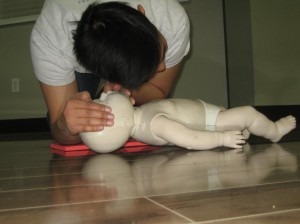
Co-sleeping is consistently gaining popularity especially among new parents as it is believed by many that it can facilitate a stronger bond between a parent and a child. However, knowing infant first aid and CPR is important when practicing this sleeping practice to ensure that Sudden Infant Death Syndrome (SIDS) and other medical conditions and complications do not arise.
What is Co-sleeping?
Often described as the latest and newest parenting fad, co-sleeping involves parents and children sleeping on the same bed as opposed to letting infants or children sleep in separate beds or cribs. Aside from the emotional aspect, co-sleeping is also said to have other physiological advantages. According to several studies, babies who sleep beside their parents are less likely to get startled and are less likely to cry. Other studies also show that babies who are exposed to this practice have more regular vital signs such as temperature and heart rate.
What are the disadvantages of co-sleeping?
One of the major disadvantages of co-sleeping is that babies or children who are exposed to this practice are more likely to suffer from Sudden Infant Death Syndrome or SIDS. Several studies indicate that infants and children who are involved in the practice of co-sleeping are more likely to suffer from accidental suffocation caused by inappropriate sleeping positions by the parents or the baby and other bedding materials such as comforters. In a study that was discussed in the American Academy of Forensic Sciences annual meeting in 2006, it was revealed that there are a large volume of parents who are unaware of the risky sleeping positions and the sleeping materials that they have on their beds. These circumstances increase the risk for SIDS.
What can first aid and CPR do?
By taking infant first aid and CPR, parents will become aware of these risky sleeping positions and other compromising positions that can cause suffocation since they will be taught about the right positions that can facilitate proper breathing in children and infants. They will also be able to determine and remove risky bedding materials from the bed. First aid and CPR can also come in handy during other infant medical emergencies such as wounds and fevers. Knowledge of CPR and first aid can also help parents determine the presence of other medical conditions through proper assessment.
